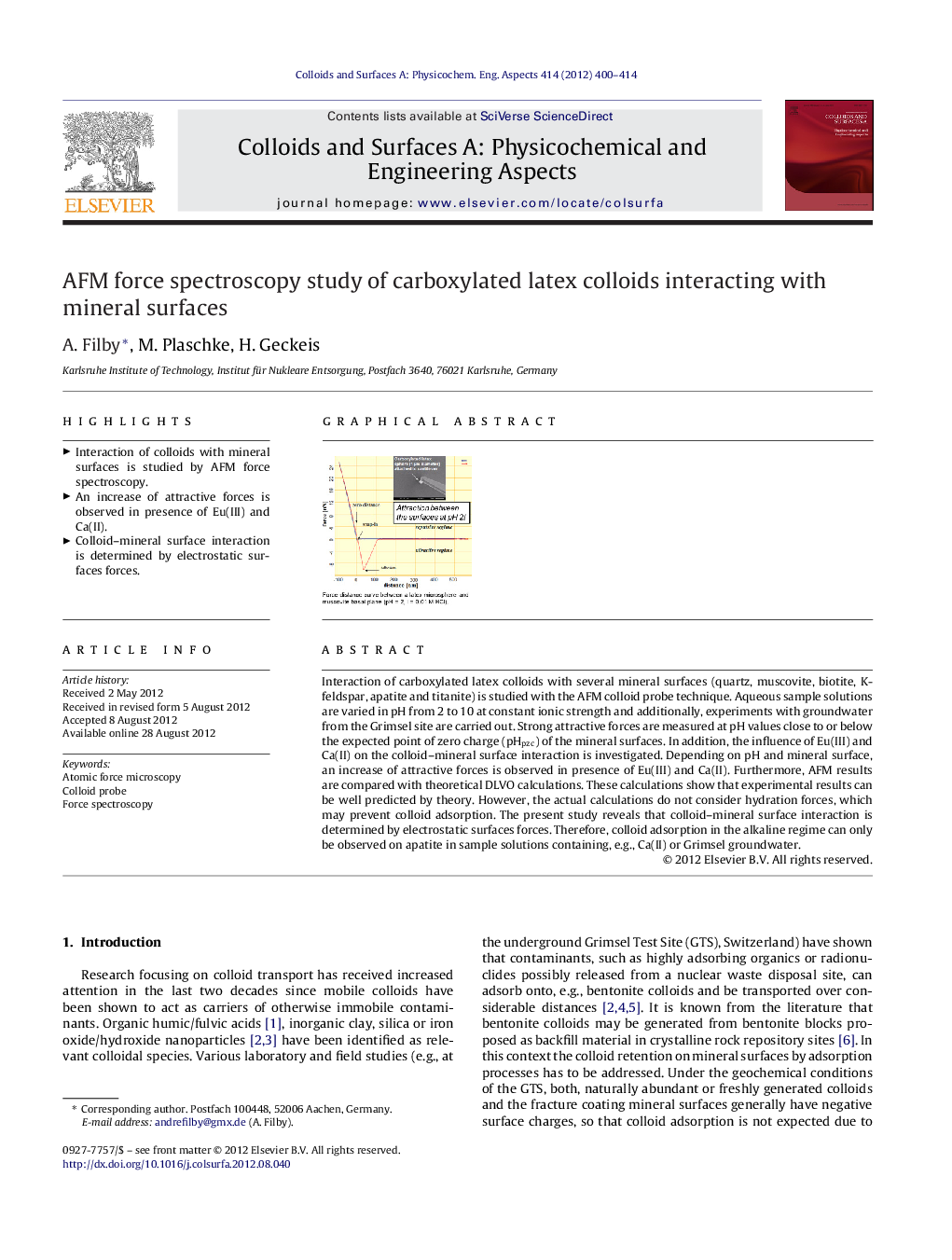| Article ID | Journal | Published Year | Pages | File Type |
|---|---|---|---|---|
| 594019 | Colloids and Surfaces A: Physicochemical and Engineering Aspects | 2012 | 15 Pages |
Interaction of carboxylated latex colloids with several mineral surfaces (quartz, muscovite, biotite, K-feldspar, apatite and titanite) is studied with the AFM colloid probe technique. Aqueous sample solutions are varied in pH from 2 to 10 at constant ionic strength and additionally, experiments with groundwater from the Grimsel site are carried out. Strong attractive forces are measured at pH values close to or below the expected point of zero charge (pHpzc) of the mineral surfaces. In addition, the influence of Eu(III) and Ca(II) on the colloid–mineral surface interaction is investigated. Depending on pH and mineral surface, an increase of attractive forces is observed in presence of Eu(III) and Ca(II). Furthermore, AFM results are compared with theoretical DLVO calculations. These calculations show that experimental results can be well predicted by theory. However, the actual calculations do not consider hydration forces, which may prevent colloid adsorption. The present study reveals that colloid–mineral surface interaction is determined by electrostatic surfaces forces. Therefore, colloid adsorption in the alkaline regime can only be observed on apatite in sample solutions containing, e.g., Ca(II) or Grimsel groundwater.
Graphical abstract.Figure optionsDownload full-size imageDownload as PowerPoint slideHighlights► Interaction of colloids with mineral surfaces is studied by AFM force spectroscopy. ► An increase of attractive forces is observed in presence of Eu(III) and Ca(II). ► Colloid–mineral surface interaction is determined by electrostatic surfaces forces.
